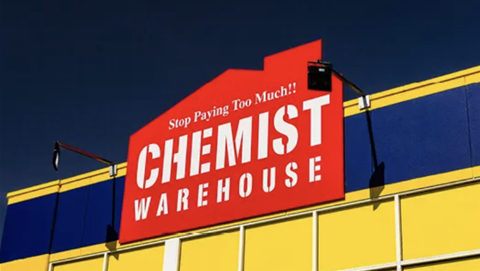As Mike Tyson the former world heavyweight boxing champion once famously observed, "Everyone has a plan until they get punched in the face."
Perhaps Australia’s business continuity planners should have heeded that warning.
Many were feeling pretty chuffed through the first two years of the pandemic. There were difficult times, lives were disrupted, and some lost, but by and large Australian society bypassed the worst impacts of the global pandemic. And while some industries, most notably travel and education were smashed, for the most part the lucky country blundered on through a phoney war against Covid.
The Delta wave should have been a wake-up call. It wasn’t.
Only the arrival of Omicron really exposed the limitation of traditional business continuity planning as the related issues of widespread staff absenteeism and supply chain disruptions struck home.
Mark Prendergast is in a somewhat unique position as a business leader having lived through huge systemic Covid shut downs twice, first as effectively the leader of AB Mauri in the US in 2020, and now as the company’s global markets director, based in Australia.
AB Mauri operates in the bakery supply business across the US and Canada. Prendergast's clients included 72 industrial-scale bakeries. For context, he says, there aren’t that many industrial scale bakeries in all of Australia.

“None of us predicted what was going to happen with shipping. None of us predicted that, that one just blindsided everybody last year at least in my industry, we never anticipated that bottleneck.”
Asked if Australian businesses should have been better prepared for the Omicron disruption Prendergast hedges, “I think everyone's going to have their own particular circumstances. It's an interesting question.”
A feature, not a bug
After two years of bipartisan agreement that Australia was best served by suppressing the virus and adopting a Covid-zero approach, a third great wave of disruption broke over the country in early 2022 after a change in leadership — and strategy — by the NSW government.
It decided to adopt a “living with Covid” approach, removing many of the restrictions that inhibited the spread of the virus, and actively encouraging its citizens to re-engage with community life.
But of course, viruses do not respect state boundaries or political mandates.
The new policy effectively unleashed Omicron on the whole country. The error was compounded by the fact that health experts still lacked a thorough understanding of the transmissibility of the variant, or its ability to evade the vaccination shield that all of Australia's government’s had counted on to mitigate the worst effects of the virus on the community.
Nor was the fault solely with NSW. All states had signed up to a national reopening plan, which proved ill-suited to the new variant. Only Western Australia maintained a Covid-zero stance once it understood the serious impact of Omicron.
The rapid rise of mass infections and illness across the country for the first time since the pandemic began, brought with it a huge disruption to the community, beyond what had been experienced in the first wave or even during Delta.
Hospitalisation and deaths are now at record levels, though high vaccination rates allowed the country to avoid the mass casualties experienced in the US and Europe due to public policy failures in those countries.
However, the business impact of Omicron in Australia in the opening weeks of 2022 looks remarkably similar to the experience of organisations overseas during the early months of the pandemic in 2020, business leaders told Digital Nation.
Supply chains are straining from employee absenteeism as workers either stay home sick or isolate themselves as close contacts.
It raises an obvious question: Should we have been better prepared?
US business leaders flew blind into the maw of the most deadly global pandemic in a hundred years. “When we had this calamity hit us from every side of it, everything was struggling,” Prendergast said.
But Australian organisations had two years to watch and learn. Many didn’t.
Roberta Witty VP analyst at Gartner said “Very few organisations had a plan for this. That's one of the biggest learnings. Few organisations had a pandemic plan."
Two big issues, in particular, emerged as the pandemic wore on said Witty, “One is the supply chain issues. And the second one is the real impact on employees or the impact on organisations due to absenteeism."
The issues are intricately linked, she said
“There’s a lot of factors that influence it. One is, are your ports open? Right, that was a big thing, right? The ports were closed because you are in lockdown unless they were deemed mission-critical. A lot of transportation systems are mission-critical, but you still have people out who are sick. The whole supply chain doesn't work because you've got gaps in the availability of people."
Goods get stuck at the port, or truck drivers can’t collect and deliver them because they are sick creating a chain reaction of shortages and disruptions across the economy.
Even if new supplies can be sourced, manufacturing processes can’t be changed instantly. Programming for new ingredients in foods might take weeks, not hours in a manufacturing plant.
“The biggest issue was a lack of people, and it has lots of impacts throughout every organisation.” said Witty.
Business leaders we spoke to in preparation of this report said business continuity plans were strong on process, even if they couldn’t halt disruptions, at least they were predictable.
But the discipline failed on two fronts, understanding the impact on people, and failing to account for the extended nature of the disruption — one that has now endured for years, and likely will continue for months and maybe years more.
Leah Fricke is an independent non-executive director in health and finance, as well as an audit and risk chair across both the public and private sectors. She told Digital Nation Australia, “One of the themes that I saw in gaps was the human-centred nature of our workplaces and in some situations the failure to recognise that in-advance business continuity planning perspective.”

According to Fricke, “The greatest challenge for most of the organisations I've been involved within the last two years has been around caring for the safety of staff in a longer-term perspective than most business continuity plans anticipate.”
Fricke echoes the sentiment of other leaders that there was a failure to understand that caring for staff often meant caring for their families as well.
“It’s a much broader stakeholder group. We've always anticipated the potential for staff to go through perhaps a traumatic event or a difficult event that were responding to, but I don't think any of us had ever planned for a longer-term perspective where all of our staff, all of our leadership team, all of the directors are exhausted and worn down by what's happening and I think that's been a lesson for a lot of organisations. How do we continue with business continuity when it is a longer issue than we ever imagined possible.”
Like Fricke, Deborah Wilson has experience as a non-executive director. She is also an executive in the recruitment industry where she is a shareholder and leader at OnTalent, bringing her into daily contact with other business leaders.
She supports Fricke’s view about the extended impact beyond the employee. “I think every person has become completely unique. It's a family issue. It's parents or grandparents or children. I think the leaders are struggling with that business continuity piece around backup, and I think that's what we're lacking, we were a bit thin on the backups in most organisations."
“Business continuity, once upon a time used to be all around the financial risk. It's all people now.”
Dan Carpenter, is the CEO of Vivid Property Services, which provides industrial cleaning services to some of Australia's best-known brands. He said initially Covid was good for business but as the pandemic dragged on, and Omicron emerged, difficulties increased.
“The way people responded to the second wave over the last seven or eight months was they started to get very good at just shutting down sites completely, or partially isolating coming up with innovative ways [to adjust]. It just made it a lot more complicated for us to be able to service them. That was the way that the world was moving — into a living with Covid kind of mentality."

“But the onset of Omicron and the rapid spread of the virus has just created new levels of aggravation", said Carpenter.
“[It] pushed us into an operating model where we're almost a dynamic rostering company. We've got 24/7 coverage every single day. We typically have large amounts of people who just can’t [work] either for being positive case or being a close contract. That makes it very difficult. So it's absolutely a daily proposition.”
That pressure however has driven positive, though difficult, change.
“We've shifted from a very planned and structured industry to survive and provide the services that we need to for our clients. We're super dynamic and responsive, which is a very big change.”
But, he adds, “People were fatigued and tired coming out of Covid one. And the resilience in our business and individually how we support our people to have the energy to go into such a real-time management model, that’s been a strain.”
The role of technology
Carpenter credits the decision by the business’ founder Scott Agnews more than ten years earlier to put technology at the heart of how it operates as a critical success factor in navigating the phases of Covid.
“He has a vision of a big investment in technology, probably more so than companies a lot bigger what we are. And we own the technology.”
That approach included the company building its own ERP system, something Carpenter admits to being initially sceptical about.
“You can run into trouble as a company investing in your own platform and having to manage it.
“What's been proven to me during this period is the value of having the ability to make the changes you need to make whenever you need to make them to service a client or to enable your business to continue."
“We are a company that should be led by our innovation and technology."
Businesses like Vivid Property Services and AB Mauri operate in a world where materials and supplies are critical. For the services sector, the impact on people was just as disruptive.
While ASX also faced some supply chain problems around equipment the bigger issue was keeping its people safe and ensuring they were equipped to keep the markets open.
According to Lisa Green, group executive, human resources at ASX, prior to the pandemic its Crisis Response Team was already dealing with issues in Hong Kong in late 2019, and had earlier experienced a short term disruption due to the Lindt café siege — which is near the precinct where the exchange is based.

That left its Crisis Response Team well set to deal with the emergence of Covid.
“In very early January, we as an organisation were starting to run drills. So for example, my team and I made sure that my payroll team could run payroll outside of the office. We were starting to do that anyway, in anticipation of just making sure that we could all work remotely. And needless to say, on the 16th of March, we sent everybody home and people really haven't been back since then. That was in 2020.”
“By the time we got to actually having a pandemic what we were able to do was very quickly look at a document that may not have been put out necessarily for a pandemic, but had been put in place for a crisis that would require all of us to not work in the office. The big work from home shift happened on a Friday, the largest trading day.”
Green credits two factors with the successful transition to long term hybrid working.
“One is just for the dedication of our team and our workforce who are absolutely outstanding, and committed to keeping our markets open. But I would also say because we had really clear crisp communication and our employees understood and appreciated deeply us putting them through.”
The change however was not without challenges or risk, especially as it was evident that some of the technology required for the shift was not fit for purpose.
It fell to ASX CIO Dan Chesterman and his team to quickly adapt.
“We did though have pretty basic tools as it related to communication, we were using Skype at the time and it wasn't widely used or adopted by the organisation. It was used in meetings, but not really as the default form of communication. And we recognised we needed to improve on that.

“We also needed to make sure when we had 100 percent or 95 percent of the staff, dialling in or coming in from outside, that we had the necessary capacity at those entry points.”
This was the biggest issue ASX needed test and challenge, according to Chesterman. The team ran simulations 20, then 30, then 50 percent over a weekend to make sure the necessary capacity was in place.
“One of the things that helped us was we created a new gateway in a cloud provider that allowed us to scale up that particular mobile path very rapidly."
ASX moved almost its entire team home over one weekend in March.
However getting people working from home was one issue, there was still a need to equip them with collaboration tools that met the new needs of the business.
“Over the next few weeks we did adopt Microsoft Teams and that really helped move us from seriously what had been 2000 era video conferencing to something that allowed for more collaboration."
Even two years later, that huge change in the work culture is still being finessed said Chesterman.
“Something that we're still working on as an organisation is improving our productivity. When we work both in and outside the office, which we can expect, there'll be an element of that over the next couple of years.”
Disruption 2.0
The disruptions of the last two years have highlighted the importance of empathetic and engaged leadership, said Anthony Wong, Rockwell Automation Regional Director, South Pacific.
"Leading with compassion and empathy in a time when employees are uncertain about the future is important in building organisational resilience and maximising staff retention."
Wong told Digital Nation Australia, "We’ve all had to lead, engage, and learn without the luxury of in-person meetings, which felt unfamiliar at first, but I’ve personally been very impressed with how quickly everyone adapted to new ways of working."

He said the swift adjustment to new working practices allowed the business to review its workspace design and office locations to focus more on collaboration spaces for exchange and innovating, with less commuting and more time for focused work.
"We also had to be careful not to replace everything with an online meeting, which can be time-consuming and draining if they start to occupy your whole week. So, we implemented Meeting Free Fridays (MFF) twice a month, to free up time for planning, thinking, or to take annual leave that has been accumulated due to many holiday destinations not being accessible."
"The best approach, to both customers and staff, is to be fully transparent and to communicate regularly so that there are no surprises or adverse impacts."
Organisations are already adjusting their business continuity planning for the next crisis. And according to Kent Cabrera, global head of HR optimisation at Aesop, an Australian luxury skincare brand owned by Brazilian company Natura & Co, it's essential to have the fundamentals in order.

"It needs to be a balance as people talk about work-life balance. It is a bit more invisible now because people are working so remotely. And most people will often say that working at home, they seem to be doing more work than they were when they were in the office because the boundaries are a little bit more vague and ambiguous."
“Resilience as you're preparing for the next crisis, [means] have you got your house in order? Have you got your fundamentals in order? “
That could be everything from security through to basic organisational structure and position structure.
“Are you clear on your goal-setting process, and your career, and talent process. Those fundamentals will allow organisations to be a bit more resilient when things occur.”


_(22).jpg&h=140&w=231&c=1&s=0)








 iTnews Executive Retreat - Security Leaders Edition
iTnews Executive Retreat - Security Leaders Edition












_(1).jpg&h=140&w=231&c=1&s=0)



